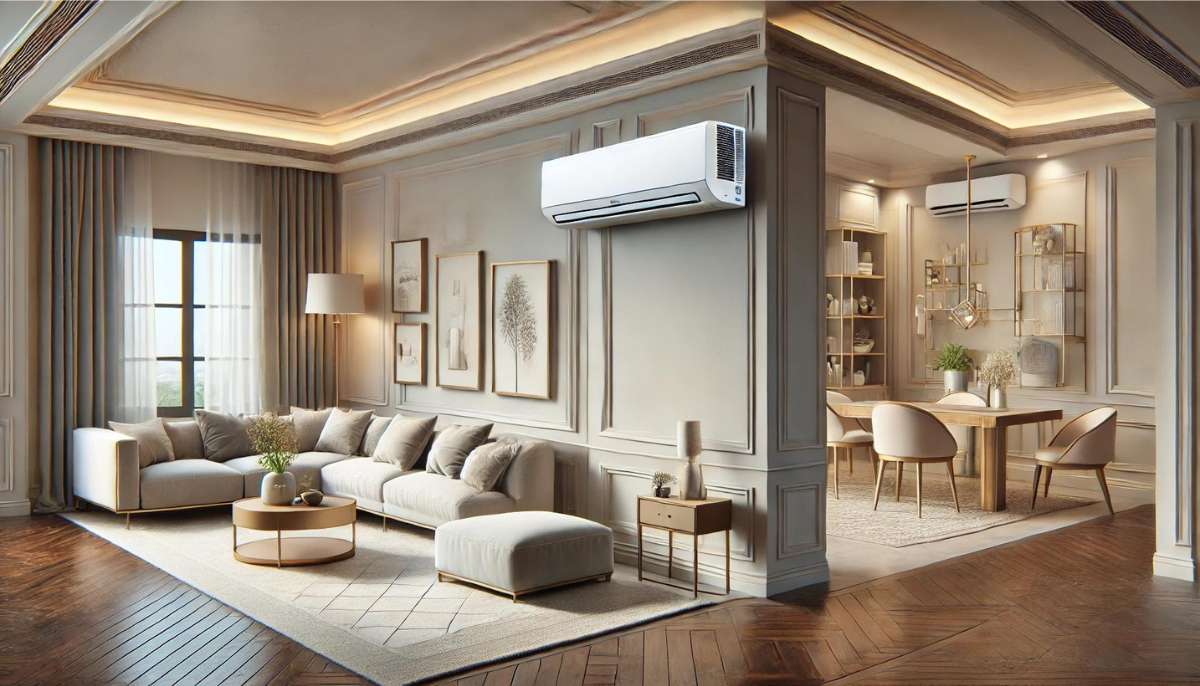When people talk about heat pumps, they usually mean one type: air-to-water. These directly replace your boiler, and variously delight or outrage people, depending on their existing hangups, past experiences, and whether they’re in the comments section of the Daily Mail.
The truth? Air-to-water (A2W) heat pumps are great, but often have complications. However, there is another way.
Air-to-air (A2A) heat pumps are the forgotten child of the heat pump family. But they’re great too, maybe even better than A2W. They’re cheaper, simpler, and can cool the house too.
So why don’t we all have one? Short answer: perhaps we should.
What is an air-to-air heat pump?
In essence, it’s an aircon unit. But it can cool and heat your property. You will have seen hundreds of them, usually in hotels or offices.
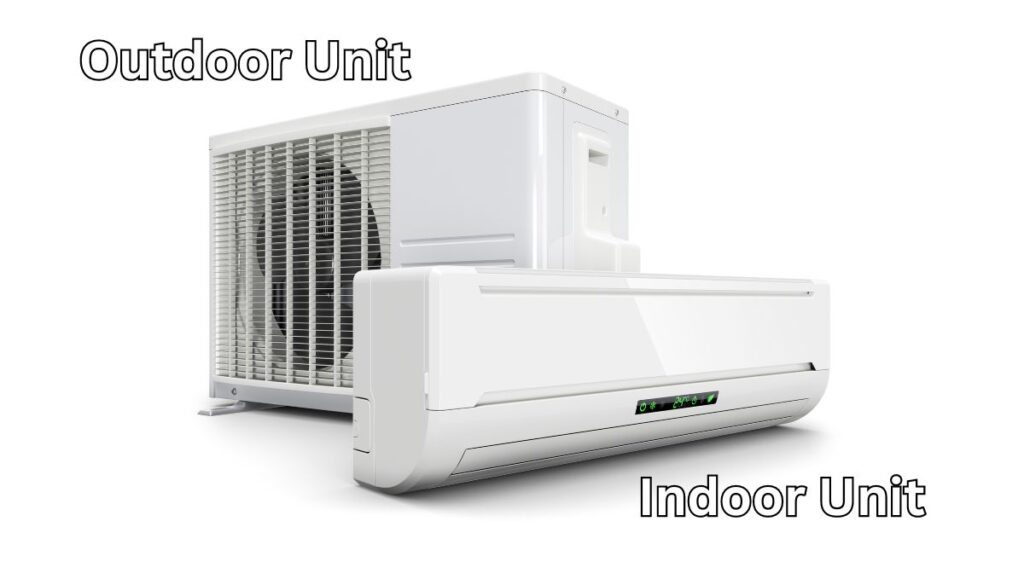
An air-to-air heat pump uses the same technology as all heat pumps. It amplifies the ambient heat outside using refrigerant and a compressor, and delivers it into the house. However, an A2A heat pump heats the air in your home, whereas an air-to-water heat pump heats the water in your radiators and your water tank (for taps and showers etc).
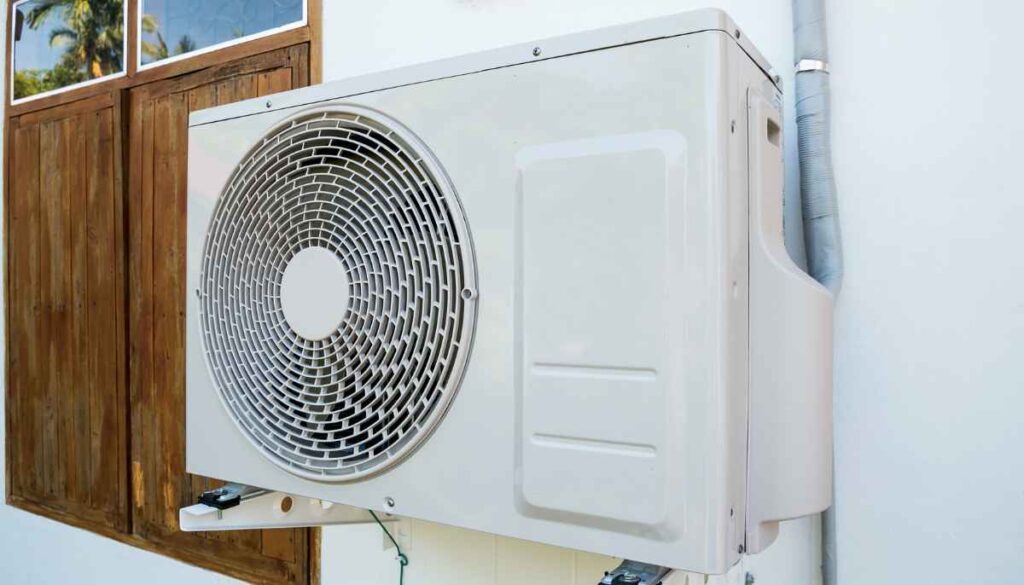
An A2A heat pump has two main components. There’s the outside unit (a big box with a fan in it) and the indoor unit, which will either be a sleek, rectangular unit on the wall, or a ‘cassette’ in the ceiling (mainly for commercial settings). The two are connected by pipework, with heat being transferred indoors in heating mode, and heat being expelled in cooling mode.
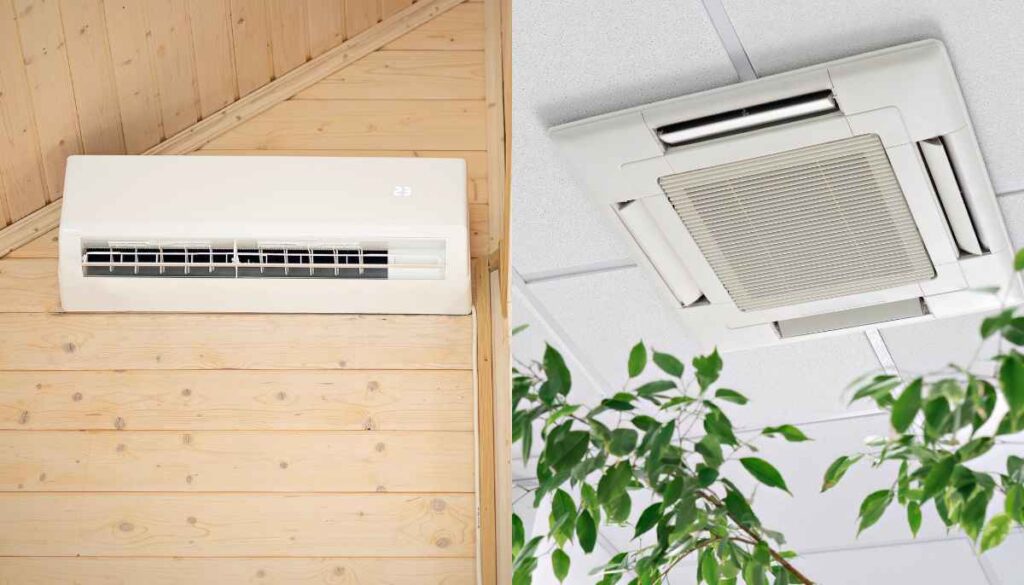
Air-to-air heat pumps come in a couple of varieties:
- Split units: as described above, with one outdoor unit, and one indoor. These are used for one specific room – lots of people on the forums are using them for garden offices, which is a great application as you’ll get cooling and heating year-round.
- Multi-split units: one outdoor unit, with multiple indoor units. These are the versions that will provide heating (and cooling) for your whole property, and can replace your ‘wet’ system. You have one box outside, with pipes running to multiple holes in your hole, on the other side of which are the indoor units.
- All-in-one units: more niche, but popular for some applications. This is where the whole system sits inside a big box inside, with just two large holes drilled into the wall. Useful mainly where you don’t want pipework showing outside (e.g. on the front of the house). However, experience from users shows they can be noisy and bulky.
Overall, air-to-air heat pumps are extremely common in other parts of the world (the USA and Australia, for instance). However, most British houses have a ‘wet’ heating system, with water moving around pipes into radiators. We just aren’t used to A2A heat pumps, but the benefits are huge.
Pros and cons of air-to-air heat pumps
Pro #1: Efficiency. A2A heat pumps have SCOP ratings between 3 and 5, well above boilers and electric heaters, and comparable to (if not better than) A2W heat pumps. There is a lot of debate about this point, and I haven’t found a clear answer to which is really better (I’m not going to pick a side). But they are certainly efficient and cheap to run, and, like any heat pump, can be run from solar panels if you have them.
Pro #2: Low Cost of Install. Air-to-air heat pumps are much cheaper than air-to-water. You can get a system for a whole house professionally installed for £3000-£5000. That’s less than what you’ll usually pay for an A2W heat pump, even after you claim the £7,500 grant from the government. I’ve used the word ‘usually’ because A2W costs are notoriously variable. Why? Because with an A2W heat pump some properties need new pipes, radiators, water tanks, etc. With an A2A heat pump it’s a different system, and the job is only 1-2 days labour.
Pro #3: Cooling Mode. This one always gets scoffs from people in the ‘milder’ parts of the UK, but there are millions of people now who find the inside heat in summer quite overwhelming. Especially down South, and especially in towns and cities. I’m one of them, and the ability to take the edge off the 30 degree heat at night with a small child sleeping (or not sleeping) would be a godsend. In fact, if you listen to people who already have A2A systems, the cooling mode is often the benefit they most value.
Con #1: No Hot Water. This is the single biggest obstacle, and the reason you might think twice about an air-to-air heat pump. They do not heat the water for showers, baths, and taps. I’ll go into a bit more detail below on this.
Con #2: No Government Grants. Because A2A heat pumps don’t generate hot water, they are excluded from the Boiler Upgrade Scheme. It’s explicitly called out in the documentation from Ofgem. You can see the logic, but it’s a bit short-sighted of the government, given this is a great way to decarbonise a large chunk of our household gas usage. The upshot is that you don’t get the £7,500 reduction, although in reality this is paid to the installer, so who knows how much is really passed onto the consumer. And, as I mentioned above, A2A is cheaper even after this grant.
Con #3: Aesthetics, Noise, and Comfort. Very much a subjective one, but some people find A2A heat pumps noisy, the heat inconsistent, the airflow distracting, and find it dries their skin out. Some people think they’re ugly. And some people think none of these things. Heat Geek aren’t keen, but I’ve also read dozens of accounts from people who don’t notice them at all, and most of the complaints about noise (which, let’s be honest, is the big one) are due to older systems.
What’s the answer to the hot water problem with air-to-air heat pumps?
Firstly, it’s worth quantifying this problem.
According to the latest data*, heating accounts for 62% of the average household energy usage. Hot water accounts for 18%. In other words, if you have a boiler, you use about ¼ of your gas for Hot water, and ¾ for heating.
*(Frustratingly, the ‘latest data’ is 10 years old. However, the hot water share is actually trending down over the long run.)
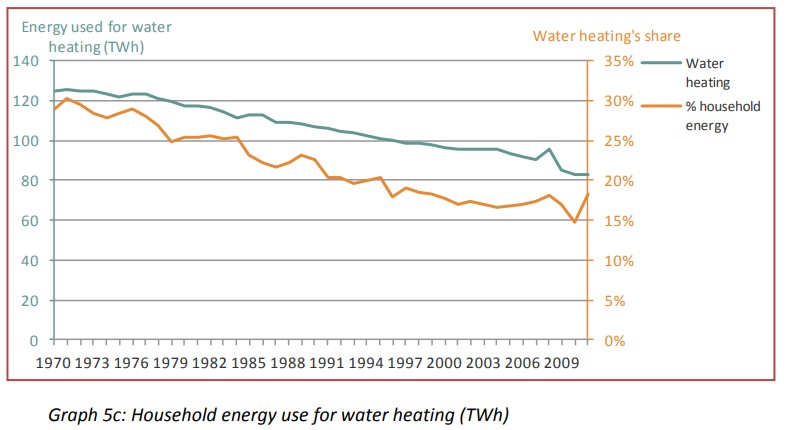
This means that replacing your heating with an electrical alternative does nearly all the job in decarbonising your gas usage.
But what about the last quarter? Well, you can:
- Keep your boiler, for now at least. Gas boilers are very efficient and about as cheap to run as a heat pump. Also you’ll have a backup heating system, just in case you get really severe weather. Just because you’re getting an A2A heat pump, doesn’t mean you have to rip out all the existing pipes and radiators – it’s not invasive like an A2W installation.
- Get an immersion heater. These are far less efficient than a heat pump, so they’re expensive to run, but reasonably cheap to buy and install. They’re essentially a big kettle: a water tank with a heating element inside. If you have solar panels, though, it might be a neat solution.
- Get a heat pump water tank. Such as this one (I’ve picked at random, I don’t know if this model is any good). A heat pump hot water tank is like an immersion heater, but it uses heat pump technology, rather than kettle technology. This is a big deal: whereas a heat pump has a SCOP efficiency of 4+, an immersion heater is <1, so the immersion heater will be 4x the cost to run. The heat pump water heater will cost more initially though, I’m seeing them at ~£2000, versus ~£500 for an immersion heater.
- Get an instant hot water heater. These ‘tankless’ heaters use huge amounts of concentrated energy to heat water on demand. You get one per tap or a big one for the whole house. They will be inefficient, and they can require a lot of maintenance. But the plus side is they’re small, and you don’t need to constantly heat a whole tank of water to 60 degrees. Some discussion of them on Reddit here, with general dislike, it has to be said.
If I were to pick, I’d stick with a boiler until it gave up the ghost, then replace it with a heat pump water tank. Unless I already had solar, in which case I’d do it straight away to get off gas entirely.
How much do Air-to-Air heat pumps cost?
Including installation, they cost around £1000 per indoor unit. For most properties this comes to £3000-£5000.
Most of the cost is in the labour. Each unit needs a hole drilling, the units attached to the wall, and pipes routing outside.
You’d place the units in the lounge, bedrooms etc. so it’s not in every room in the house (e.g. the hallways). Overall, a 5 unit system can cover at least 130sqm which is larger than the average UK house. Of course, if you live in a mansion, or in a house with lots and lots of small rooms, you may need additional units.
Here’s a breakdown of costs by unit.
| Units | Parts Cost | Labour Cost | Total Cost |
| 1 | £500 | £1,000 | £1500 |
| 2 | £700 | £1,500 | £2,200 |
| 3 | £1,200 | £2,000 | £3,200 |
| 4 | £1,500 | £2,500 | £4,000 |
| 5 | £2,000 | £3,000 | £5,000 |
I got these figures from Appliances Direct, who were very helpful when I rang up. Of course, these numbers will also vary by region, and by model of heat pump.
Side note: I like that Appliances Direct have a list of installers to recommend when you go through checkout, while also offering installation themselves. If you can’t find someone local, they can help out.
Are air-to-air heat pumps worth it?
Yes. The more I’ve researched, the more I like them. And people who have them in their homes like them too – in fact, they love them.
Time and time again, owners say the same thing. ‘If I moved house, I’d get it installed in the new place straight away’. It’s not solely judged on payback period, people hugely value the added comfort (and cooling). I saw it likened to air con in a car: 30 years ago it wasn’t standard, but now you wouldn’t go back.
This thread on the Pistonheads forum is great for getting some real-world experiences. There’s 65 pages of discussion, and yes, I have read all 65.
The summary is: they’re cheap to buy, cheap to run, heat up and cool down quickly, rarely go wrong, and are easy to install. £3000-£5000 for an electrical heating system that you can run cheaply, or for free off solar panels, and it can cool you down too – that’s a great deal.
Can you DIY install an air-to-air heat pump?
You can, yes. But it’s a bit complicated.
Lots of people do it, but you need to be confident drilling holes through your wall, mounting the units, and connecting the pipework without it leaking. This lowers your overall cost to more like £1000-£3000, depending on the size of the system.
You can buy ‘easyfit’ kits, such as this one from Appliances Direct. These come ‘pre-gassed’ – i.e. you don’t have to fill it up with refrigerant, which is a more advanced job. They have under 4.5m of pipe (any more, and gas may need to be added). If you look at the spec, it also contains a type of gas which doesn’t need an f-gas engineer.
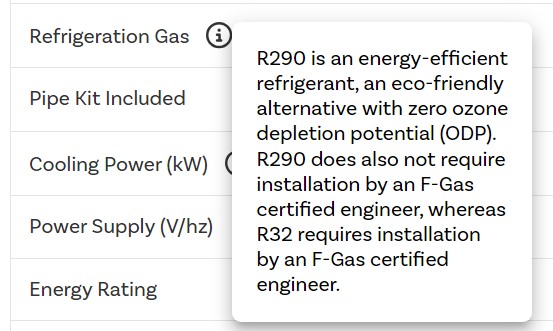
However, this is a single unit. Multi-split units tend to fall foul of these requirements, as they have more pipe, or use a different gas. If you then try and purchase them, you’re met with another checkbox. They don’t let you buy it unless you have an installer booked.
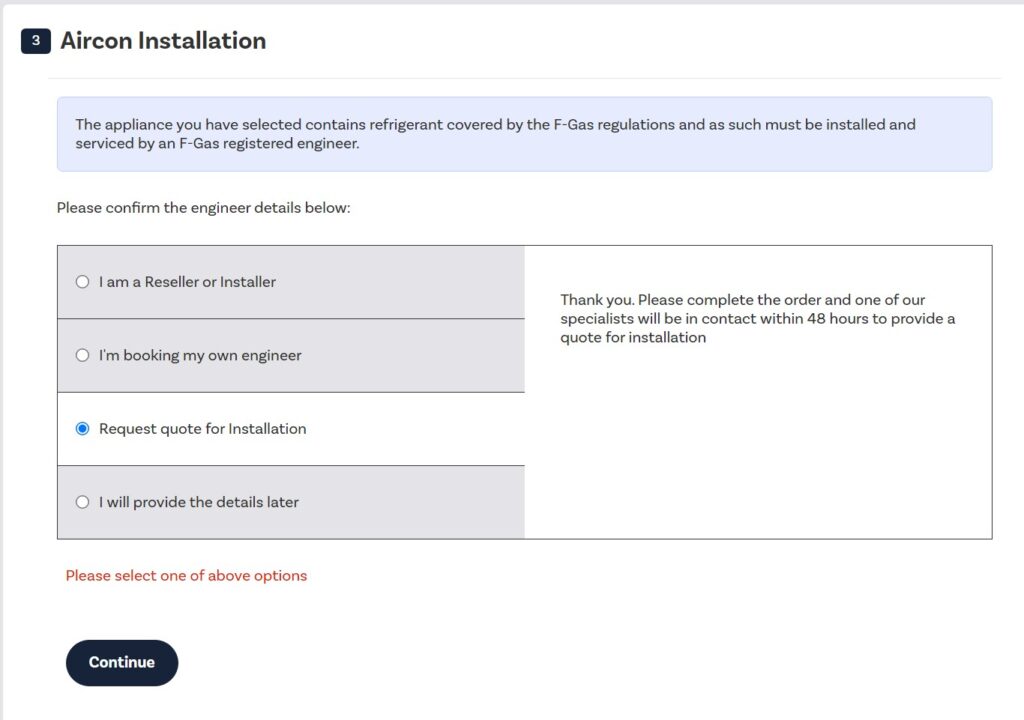
Anyway, if you can get one of these easyfit kits then it’s perfectly doable on your own. You can also get the all-in-one unit I mentioned right at the top. There is lots of information online, such as this video, which talks you through his DIY installation process.

